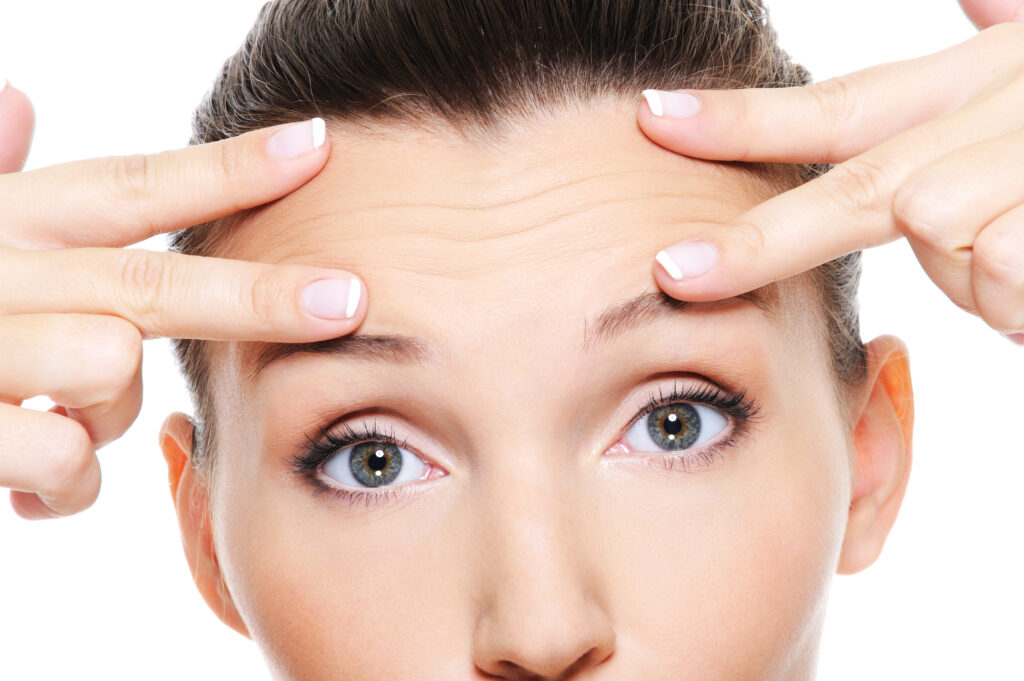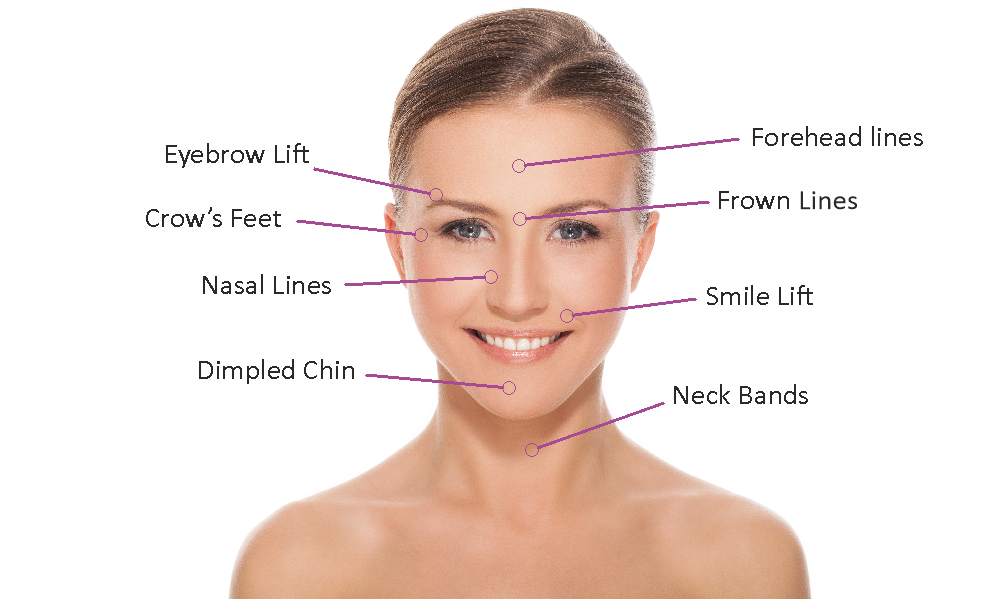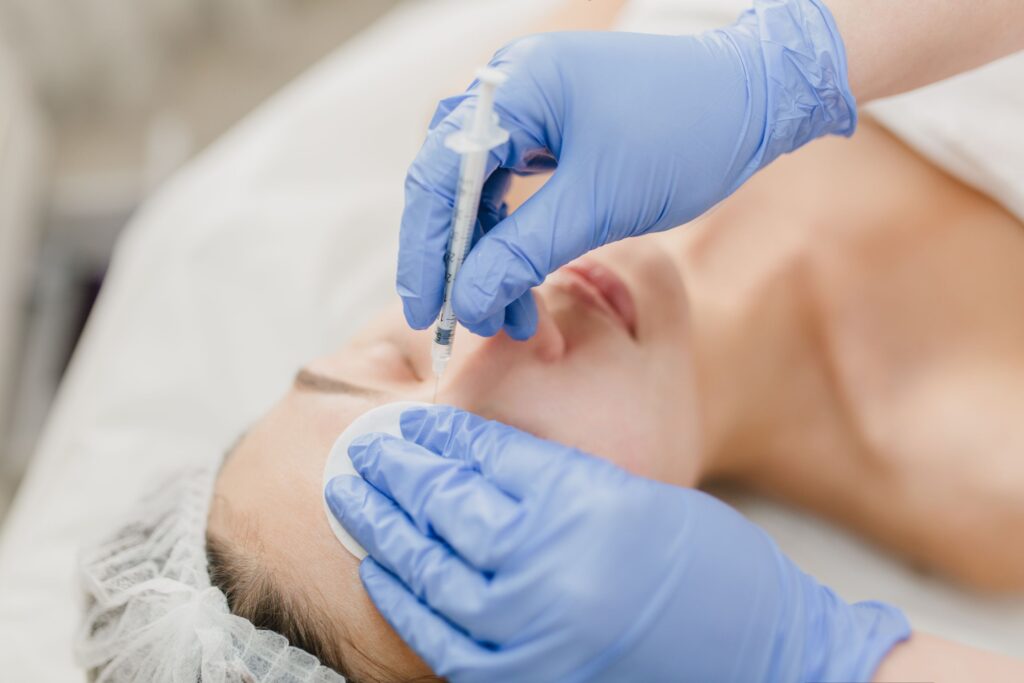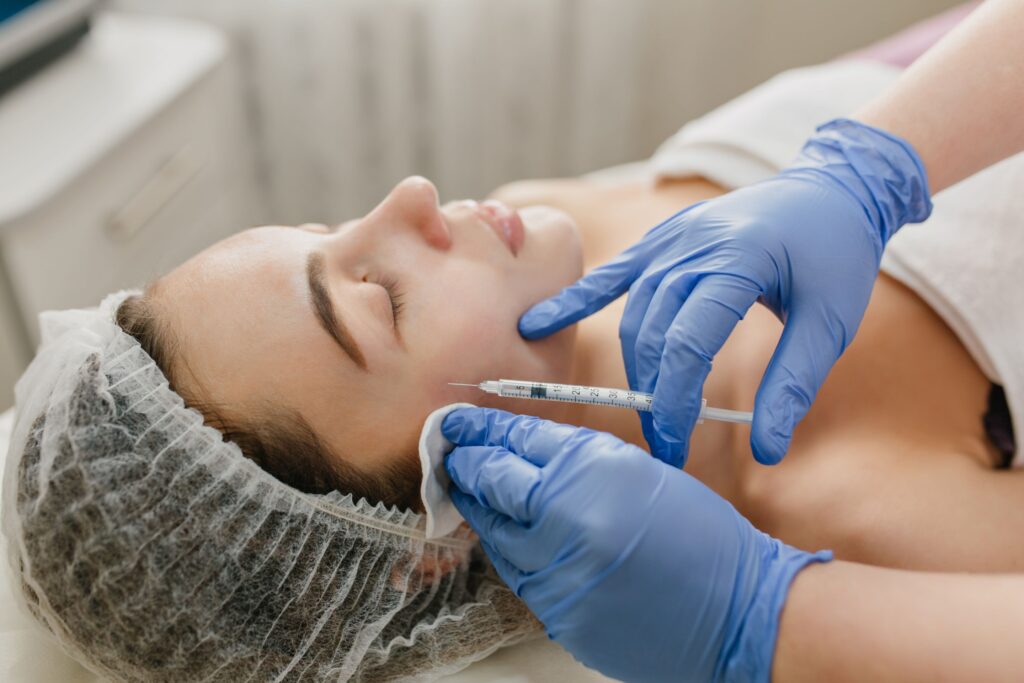How often can I apply Botox? Is it safe? Who shouldn’t get Botox? All these questions and many others probably came to your mind when you think about the procedure. It can be stressful to decide whether the treatment is right for you. Botox injections are costly and even a little scary especially if you have not gotten used to injections.
Dr. Tatiana Kobets has 20 years of experience in dermatology and 18 years with botulinum toxin injections. She is the founder of the clinical center KeyMed and a member of the Ukrainian Association of Dermatologists, Venereologists, Cosmetologists (UADVC). On year basis she takes part in international conferences in esthetic medicine.
We asked Dr. Kobets to answer the most typical questions and share her experience and knowledge regarding the procedure. We divided the interview into three main topics:
What you should know before the procedure?

What is Botox?
Botox is a brand name for botulinum toxin A. It is the most widespread neurotoxin in the esthetic sphere and medicine.
I prefer to use the term “botulinum toxin”. It is not medically correct to use the word “botox” for the all procedures we can do with botulinum toxin. Botox is just one of the multiple brands that sell botulinum toxin A. However, as Botox was the first medication of this group on the market it has become the synonym for the procedure itself.
There are many other brands on the market except Botox. For example, Dysport, Xeomin, and Jeuveau.
What is Botox made of?
Botulinum toxin A is a neurotoxin synthesized by Clostridium botulinum. This bacteria causes botulism if the person eats food contaminated with it. Home-made preserved meat, fish, or mushrooms are the most dangerous products.
Botulism is a severe condition that can lead to a lethal end because high amounts of botulinum toxin cause the blockage of breathing muscles.
How does Botox work?
The main principle is that botulinum toxin blocks signal transmission between neurons and muscles.
In the normal state, neurons send impulses to contract muscles by releasing special compounds called neurotransmitters. After injecting botulinum toxin into the muscles, it blocks the release of these neurotransmitters. As a result, muscles relax.
As many wrinkles on the face appear due to active facial movements like smiling or frowning, muscle relaxation leads to a smoothing of the lines and prevents the formation of the new.
What is Botox used for?
Botulinum toxin has many additional uses except esthetic medicine. The original purpose of the drug was the treatment of blepharospasm. This is an ophthalmological condition when there is an abnormal contraction of the eyelid muscles.
With botulinum toxin, we can treat wrinkles on the forehead, between eyebrows, crow’s feet, bunny lines, marionette lines, lop lip lines, dimpled chin, and neck bands. The lower part of the face is harder to treat because many factors contribute to the wrinkles there besides muscle activity.
Moreover, it is possible to lift the eyebrows, but this works not for all patients so I assess it individually depending on muscle activity.
Botulinum toxin applications include treatments for cervical dystonia, lazy eye, cerebral palsy, hyperhidrosis, chronic migraine, bladder dysfunction, and some other neurological conditions.

Face botox treatment areas
Botox, Xeomin, and Disport: what is the difference, and which one is better?
All these medications are botulinum toxin A as we discussed earlier. The main difference is the carrier of the toxin. For example, Xeomin contains a pure toxin while Botox and Disport include complex proteins.
Additives influence diffusion, action time, and storage condition. For example, Dysport diffuses the most compared to the other two medications, so it is more suitable for treating large areas.
The question about what is better is hard because only the doctor knows which one is better for you. Every medication works the best with a particular request. I recommend going to a specialist who works with many botulinum toxin medications.
Are there any disadvantages of Botox?
I would probably say that the major disadvantage of Botox is the temporary effect. I mean if you want to achieve long-lasting results your need to repeat the procedure.
Another thing is that the final result depends on the proficiency level of the specialist. Botulinum toxin is not a simple injection. It is important to take into account face structure, anatomy, and individual features to achieve the best results.
Unfortunately, nowadays, many people decided to start giving botulinum toxin injections even without proper qualifications.
Preparation for the botulinum toxin injections

At what age should you start Botox?
The starting point is undefined and ranges from the mid-20s to the late-30s. The procedure has one specific indication. It is a formation of mimic wrinkles, which don’t smooth out even in a relaxed state. If a person sees them on the face then it is time to visit a dermatologist and discuss the treatment plan.
However, botulinum toxin will work only in the early stage of wrinkles formation. If wrinkles are too deep, I usually recommend starting with other procedures to smooth out the skin and then fixing the result with botulinum toxin. The key to success here is to go to the specialist as soon as possible after you notice the first signs of aging.
However, in my practice, most people don’t come to me with defined intent to make botulinum toxin injections. They come in the first consultation with the problem of aging skin, and then we develop a treatment plan.
How to select a good specialist?
Well, there are some indicators. The first one is a complete medical high education. Depending on the country the list of specialists, who can inject botulinum toxin is different. It can be either limited to dermatologists and plastic surgeons or any specialist with a degree in medicine. If you don’t want to check the list in the legal documentation, then just check the presence of the diploma.
The second aspect is the certificate of the complete courses from the manufacturer. What I am trying to say is that if a person works with Botox then he should complete courses from its manufacturer. As we discussed earlier, every medication has specific features, that need to be considered during injections.
Another point is the certification of the place of the procedure. The medical center or private cabinet should have a medical license.
Who should not get Botox?
Botulinum toxin injections have a few contraindications, including pregnancy, lactation, Lambert–Eaton myasthenic syndrome, inflammation in the treatment area, and adverse dermatitis on the treatment site.
What I want to point out is that cancer is not a contraindication. Recently, oncologists have started to allow their patients to receive botulinum toxin injections.
My patients usually ask me whether they can get an injection with acne. The answer is yes for nonsevere acne. However, if in the injection sites there are pimples, nodes, or cysts with pus, then we need to wait until it heals.
There are also some situations when Botox works worse. For example, if a person had a shot of vaccine against botulism or recovered from this disease that is the botulinum toxin.
Men also tend to be less sensitive to botox, because of greater muscle mass on the face. It doesn’t mean that men shouldn’t get injections. Still, they require more doses of the medication.
What topic I should discuss with the doctor during the first session?
During the first visit to a specialist, you probably will hear some questions regarding your daily life and further plans. My list of questions includes the following.
First of all, I need information about previous treatments, in particular the medication, treatment sites, etc. Secondly, information about medications, vitamins, or microelements a person takes daily. For example, most vitamins decrease the length of the botulinum toxin effect.
Another important thing is the planned operations or procedures in the nearest 2-3 months. Anesthesia removes the botulinum toxin effect, so it is better to plan the procedure afterward.
Last but not least, is the injuries in the treated zones. Trauma affects the muscle structure so the specialist needs to take it into the consideration these changes.
Achieving best results: recommendations after the procedure

How often can I apply Botox?
The frequency of the procedure is every 3-6 months. It mostly depends on the individual features, the amount and quality of the botulinum toxin, and the muscle activity in this zone.
I recommend treating all desired zones in one session. As the procedure is costly, many people want to tread forehead lines in one session and then crow’s lines in a month. However, this is the wrong approach as botulinum toxin stimulates immune reactions. If we stimulate too frequently, one day the medication will stop working, because the immune system will neutralize it.
Sometimes, I even recommend making pauses of 1,5-3 months even after the effect wears off. First of all, this gives us time to do other procedures in the treatment zone which is not comparable with botox. Secondly, it helps to decrease the immune response to the medication, so the result from the next procedure will last more.
What are the restrictions after the procedure?
What I recommend to my patients is to avoid cardio exercises for 24-48 hours, because intensive blood flow can result in excess diffusion of the medication and lead to an unexpected result.
Moreover, patients should avoid any thermal procedures like a sauna or sunbathing for a week after the procedure.
There are no strict dietary restrictions except for the consumption of alcohol. It should be avoided for up to 48 hours.
There is also a hilarious recommendation about keeping the vertical position for hours. This is the old standard and modern medications don’t require this. Even if we take into account this recommendation in the majority of cases people don’t lay immediately. They use transport to go home, meet with friends, or go to drink some coffee, so they keep their vertical position at least for an hour and this is enough.
The last thing is that if you have an at-home lifting or contouring device don’t use it on the treated site. The same logic works with professional treatment. I recommend discussing with specialists all treatments in advance. Botulinum toxin cannot remove deep wrinkles, so if a patient has them, we smooth them with other procedures and then fix the result with botulinum toxin.
What are the side effects of Botox?
Botulinum toxin injections are safe procedures. After the procedure, there will be small pimples in the sites of injection, which disappear in an hour or so.
The most common side effects are bruises, swelling, or pain in the injection sites. These effects wear off in 7-10 days after the procedure.
Another effect, that my patients report are a few changes in facial movement. As we block some muscle groups, others try to compensate for their function and it provokes an uncomfortable feeling. However, patients get used to these feelings quickly, but the positive result remains.
Mild headache is another possible short-term side effect, but in a couple of days, it fades too.
Mild side effects include asymmetry, dropping of the eyelid or eyebrow, or swelling of the eyelid. Usually, they are connected to the wrong procedure execution. Some patients tend to develop these side effects. For example, if a person always keeps the forehead in tension and rises their eyebrows to open their eyes, probably after the procedure their eyebrows will drop.
Regarding the swollen eyelid, it is also a matter of tendency. I mean, if a person has an excess volume in this area, he or she is likely to get this side effect. What I recommend to my patients is to massage this area a little to stimulate the removal of excess water. If swollen eyelid doesn’t disappear in a week, then it is a result of a bad procedure.
Is it possible to fix bad Botox results?
Yes, it is ridiculous when a specialist said something like “wait for 3-6 months”. This is not the solution if a patient got a dropped eyelid or eyebrow.
Recovering from bad botox results requires time and patience. As botulinum toxin blocks muscle activity we need to stimulate it with different procedures. For example, I perform SMAS-lifting, microcurrents, and massage. Usually, it takes up to 3 weeks of regular procedures to see the improvements.
It is also possible to fix the result at home with an additional daily routine. Devices with microcurrents or radio lifting give the same effect as in-office treatments.




